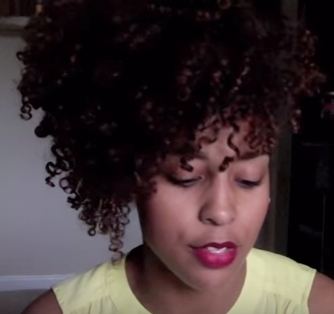 | ||
The Curly Girl Method is an approach to hair care designed for naturally curly hair that has not been relaxed. It is similar to the "no poo" method in that it discourages the use of shampoo. Among other things, it calls for the use of conditioner in place of shampoo (also called "conditioner washing" or "co-washing"), no silicones (used in many commercial conditioners and styling products), no blowdrying, and no combs, brushes, or terrycloth towels. It also includes tips for using hair gel and other styling products. The aim in general is to treat curly hair gently, minimizing damage to the hair cuticle; to keep it moisturized, since curly hair is more prone to dryness than straight hair; and, perhaps most significantly, to accentuate rather than interfere with the hair's natural curl.
Contents
History
While variations of the method had been in use before then, in 2001 it was introduced to an international, multi-ethnic audience by hairstylist Lorraine Massey in her bestselling book, Curly Girl: The Handbook. When the book was first published, straight hair was the prevailing style for women in the U.S., the U.K., and elsewhere, and many women felt pressured to straighten their hair with flat irons or relaxers. Massey, who is white, writes in her introduction about growing up in England, where she was ridiculed for having curly hair. When she moved to New York City, she had an eye-opening experience: "Jewish, Italian, Latino, and African-American people living around me had curly hair that looked like mine! I no longer looked or felt like an outsider." In recent years, curly hairstyles have become more popular.
Variations
People with various hair textures have adapted the Curly Girl Method to their needs. Popular variations include the use of sulfate-free shampoos, which are more widely available now than they were in 2001, and occasional blowdrying with the use of heat protectants.
The Curly Girl Method is also used by males; the name "curly girl" reflects the relative importance of hair care to women and girls due to societal expectations. The method can also be used on kinky, coily, and wavy hair, which are often treated as curly hair types or "curl patterns" on hair care websites and in hair typing systems.
As co-washing has become more popular, consumer demand has spawned a new hair product, the "cleansing co-wash", which proponents claim removes buildup from the hair and scalp without the harsh "stripping" or drying effects of traditional shampoo.
Massey's book also includes techniques for cutting curly hair, such as cutting the hair when dry rather than wet. Related hair cutting techniques include the Deva cut, Ouidad cut, and RI CI cut.
Other authors have written curly hair care guides which focus on specific hair types. Curly Like Me: How to Grow Your Hair Healthy, Long, and Strong by Teri LaFlesh provides natural hair care tips especially for tight curls. Better than Good Hair: The Curly Girl Guide to Healthy, Gorgeous Natural Hair by Nikki Walton focuses on Afro-textured hair. Writers at the Naturally Curly website provide hair care advice based on curl pattern, porosity, and other factors.
